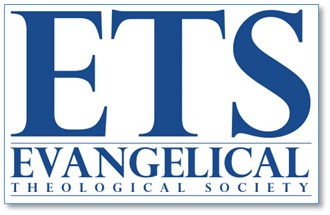Another annual meeting of the Evangelical Theological Society (ETS) is now in the books. We met in Denver, Colorado this year, and it was a really good week. For those of you unfamiliar with ETS, it is a society of theologians and biblical scholars who are dedicated to biblical inerrancy and a belief in the Trinity. At the annual meeting, members come together to present academic papers, meet with publishers, and catch up with old friends. Keep in mind that I only experienced a narrow slice of things, but here are my reflections on what I saw.
1. Denver, Colorado
It’s really cold there. It’s also a place where marijuana is legal, which I guess explains one really strange experience on the way to the hotel from the airport. I was in a rental car with some colleagues on the freeway going about 70 mile per hour, when all of a sudden out of nowhere we started smelling marijuana. Trust me, there was no marijuana in the car with us. Nevertheless, on the freeway and not yet in the city, we somehow got a whiff inside our car of marijuana someone else was smoking outside our car. I don’t know how much marijuana it takes to pull that off, but it must be a lot. That can’t be good. I’ll leave it there.
2. CBMW Dinner
Every year the Council on Biblical Manhood and Womanhood (CBMW) hosts a small banquet the night before ETS to engage and encourage complementarian scholarship. It is always such a rich time of fellowship and discussion with likeminded brothers and sisters. I first attended one of these when I was a Ph.D. candidate myself many years ago, and I am pleased that we are still able to continue this event. Jim Hamilton delivered a homerun of an address titled “Marx Has Won the Culture, but He Won’t Win the War.” It will be appearing in the Spring issue of Eikon. Keep your eyes peeled for that one.
3. Panel on John Piper’s Book What Is Saving Faith?
This was the only session that I planned to listen to from start to finish, and I did. There has been some controversy around Piper’s recent book What Is Saving Faith? Reflections on Receiving Christ as a Treasure (Crossway, 2022). I won’t rehearse it all here, but some critics have charged Piper with adopting a view of faith that is more akin to Roman Catholicism than to Reformed Protestantism. Because Piper includes an affectional element in his definition of faith, he undermines sola fide. That’s the gist of the criticism anyway.
I came with an open mind and heart wanting to hear from both sides to find out who could make the most persuasive case from Scripture. John Piper presented his case first, and then Guy Waters and J. V. Fesko responded with substantial critiques. Waters focused his critique on Piper’s reading of Scripture, and Fesko focused his on Piper’s use of historical sources. Joe Rigney moderated a spirited and respectful discussion after the three papers.
Waters argued that Piper’s interpretation of key Scripture texts is mistaken and that the addition of an affectional element (i.e., treasuring Christ) makes faith into a work rather than a passive receiving, resting, or reclining in Christ. Fesko argued that Piper’s appeal to Calvin, Owen, and Turretin are also mistaken because each of them were writing about the faith that sanctifies not about the faith that justifies (in the places where Piper quotes them). Fesko concedes that Piper’s reading of Edwards is probably more on point but that Edwards departed from the reformed tradition and knew that he had done so. Fesko ended his presentation by outlining a path forward for Piper. Fesko says that Piper should either affirm the reformed tradition and revise his book, or he should just admit that he has departed from the reformed tradition concerning sola fide.
For my part, I am not yet convinced that Waters and Fesko have proved their case. Waters and Fesko and Piper all agree that faith should be defined as knowledge (notitia), assent (assensus), and trust (fiducia). Fesko and Waters say the affectional element (i.e., treasuring Christ) is no part of that. But it seems to me that treasuring Christ could be a part of the definition without compromising the passive character of faith as a receiving, resting, reclining in Christ. Fesko and Watters say that true faith knows, assents, and trusts in Christ as he is revealed in Scripture. But if Christ is revealed as a treasure in Scripture, doesn’t that mean that saving faith must receive him as such?
Anyway, I’m open to being convinced otherwise, but I couldn’t tell from anything Piper said on the panel that he had turned faith into a work. He’s simply saying that saving faith receives the crucified and risen Christ as a treasure. That not only seems consistent with the Reformed tradition, but it also seems to be what the Bible teaches.
4. Paul’s Use of the First Person Plural
I’ve been preaching through 2 Corinthians at my church, and Paul’s use of the first person plural is a major interpretive issue in that letter. It has come up over and over again in my preaching. So I was really grateful for Kevin McFadden’s session on Paul’s use of the first person plural in his letters. Kevin had some really great insights on this, and the discussion afterward was really stimulating.
5. What Is a Man? What Is a Woman?
I delivered a paper in an ethics session titled “What Is a Man? What Is a Woman? Answers from Natural Law and Scripture.” I’m writing a book on complementarianism right now, and this paper comprises a portion of the second chapter, which is about what the natural law teaches us concerning manhood and womanhood. Perhaps the most fundamental thing that it teaches us is that a male is someone whose body is organized to reproduce as a father, and a female is someone whose body is organized to reproduce as a mother. A man, therefore, is a person of that sex whose members are potentially fathers. A woman is a person of that sex whose members are potentially mothers. I got some great feedback from those who attended the paper, and I’m especially grateful for one man and two women who offered critical feedback that I think will help make the book better. So if any of you three are reading this, thank you!
6. Presidential Address
The first time I heard D. A. Carson speak in person was way back in 1998 when I was a graduate student at Dallas Theological Seminary. He delivered four lectures which eventually became the book The Difficult Doctrine of the Love of God (Crossway, 2000). I will never forget those lectures. It was a detailed exposition of biblical texts from John’s Gospel, and I was absolutely transfixed by the power and profundity of what I was hearing.
Fast-forward now almost 25 years later to Dr. Carson’s presential address in Denver. It was the same experience all over again. A powerful and profound exposition of God’s holiness from Isaiah 6 and Revelation 4:8. The address will eventually be published in The Journal of the Evangelical Theological Society, but I encourage you to get the audio if you can when it is released.
7. Getting to Business
There was a bit of unexpected controversy at this year’s business meeting. It was nothing major, but it did make the meeting go a little longer than anticipated. We were set to vote on a series of amendments to ETS’s bylaws, and they were all being passed rather easily without objection until we got to the last one, Amendment 15, which reads: “Amend all instances of sole masculine pronoun (he, him, or his) by inserting ‘or she,’ ‘or her’ as required.” After this one was read, a member rose to object to it. I don’t know the person who raised the objection, but the young man suggested that we not pass this amendment for two reasons: (1) the generic use of “he” is clear enough as is, and (2) generic “he” is more concise than the cumbersome “he or she,” “him or her,” etc.
This objection and the following debate took me completely by surprise. I came into the meeting with no objections to any of the amendments. And even after the young man made his objection, I still planned to vote for the amendment. But the ensuing debate on the floor muddied the waters for me, and I ended up voting against it. Here’s why.
After the young man stated his objection, about 2-3 other members rose to defend the amendment by arguing that the current use of generic “he” in the bylaws excludes women and creates an unwelcoming atmosphere for women in the society. It seemed like they were saying that the use of generic “he” is somehow harmful or inconsiderate to women.
Another member rose to point out that changing every use of “he” to “he or she” could have theological implications where those pronouns refer to God. That turned out to be a moot point because the bylaws don’t use any masculine singular pronouns in reference to God. I’m not sure this point was sufficiently clarified during the meeting, and I suspect that added further confusion to the situation.
I have no problem with the use of generic “he” in the ETS bylaws. In my view, generic “he” is perfectly understandable English. Indeed, I believe that generic “he” is sometimes preferable for clarity. The large scale studies showing a decline in usage of generic “he” do not show any decline in the expression’s understandability.1 Even though less and less people use such expressions, they still understand them when they hear them.
For that reason, I didn’t believe that the amendment was needed because the current language is clear. Nevertheless, I was going to vote for the amendment anyway out of deference to the committee and because I didn’t think it was a matter worthy of controversy. I still don’t.
But in the moment, the debate changed my calculus, and I felt the need to register disagreement with some of the arguments made on the floor. I just fundamentally disagree with the notion that generic “he” excludes or mistreats women. That charge seems to imply an uncharitable judgment on the framers and adopters of the ETS bylaws. Those framers and adopters were not trying to exclude women. They were merely using generic “he,” which, although out of fashion, is still a clear English expression.2
In hindsight, I wish that no one would have raised an objection to the amendment. It was not worth the controversy. I think all of us would have been better off just accepting the amendment without objection.
These are prudential matters. Brothers and sisters can agree to disagree in good faith on that amendment, and I have no problem with anyone who voted differently than I did. Although I wanted my vote to signal a rejection of some of the arguments made on the floor, I did not intend for my vote to be a rejection of the Board’s good work on these amendments. The Executive Director Ken Magnuson, President D. A. Carson, and the other officers and board members did a fine job, and I am grateful for them.3 Maybe a better decision for me would have been to abstain. I’m always conscious of 1 Corinthians 4:4, so I’m open to the possibility of being mistaken on some part of this.
My explanation on this last point has been long, but don’t let the length mislead you into thinking this controversy was bigger than it was. The vast majority of members don’t even attend the business meeting and are likely blissfully unaware of all this. All in all, it was a great meeting, and I am very grateful for the stimulating interactions throughout the week.

Notes:
1 I wrote about this at length about 11 years ago in this article on page 26 beginning in the section titled “The Use of the Collins Dictionaries Report.”
2 Just yesterday, I was looking at the “usage note” on generic “he” in the American Heritage Dictionary. I’ve had occasion to read this note numerous times in the past, but it appears to have been updated since the last time I looked at it. Three quick observations about the “usage note”:
(1) The note is straightforward about the fact that ideological concerns drove the move away from generic “he.” The note says, “this usage has been criticized for being sexist in its assumption that the male is representative of everyone.” The problem is not that generic “he” isn’t clear English but that the expression assumes male representation. In other words, the use of generic “he” is not so much a linguistic problem but an ideological one.
(2) The note also highlights a problem with using “he or she” in place of generic “he.” This is the section that I hadn’t seen before: “Writers can also employ compound and coordinate forms such as he/she or he or she, though these constructions can be cumbersome in sustained use and exclude nonbinary individuals who use singular they.” If this note is correct, then ETS has adopted language that by design excludes so-called “non-binary” people.
(3) One last thing, and this is extraordinary. The note admits that clarity isn’t the issue. The end of the usage note reads,
In certain sentences, the generic pronoun can simply be dropped or changed to an article with no change in meaning. The sentence A writer who draws on personal experience for material should not be surprised if reviewers seize on that fact is complete as it stands and requires no pronoun before the word material. The sentence Every student handed in his assignment is just as clear when written Every student handed in the assignment.
As I said before, generic “he” has diminished in usage, but it hasn’t diminished in clarity or understandability.
3 After the meeting, I discovered that the current ETS bylaws already make use of “he or she,” “him or her” in some places but not in others. The amendment has the effect of making the language consistent throughout.






